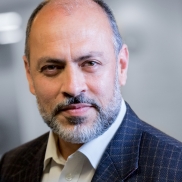if we do it right, we can significantly improve the way local people interact with law enforcement and social services.
So how do we do this properly?
What are police currently responsible for? Which issues are they well-equipped to handle? Which issues are made worse? Should law enforcement perform wellness checks? Respond to substance use issues? Homelessness?
Analyzing the location, time and type of police interactions is crucial to understanding how police engage in communities, and what impact that has on individuals. Service data, when used correctly, can help map inefficiencies in police activity and identify areas where we need to strengthen community wellness.
Prevention and risk mitigation are the keys to reducing the need for crisis responses. The Neighbourhood Equity Index is a tool that can help identify communities that are overburdened by crime, emergency calls and policing. United Way East Ontario uses this tool to target where the needs are greatest and where we can have the greatest impact on community resilience.
As a network of social service partners, we can create a stronger social safety net in these neighbourhoods by delivering appropriate responses — work that is already in motion. Approaches such as creating employment opportunities to increase financial stability, offering place-based mental health and substance use support, or creating safe places for young people to gather after school can reduce crime and strengthen feelings of safety.
To better understand which services people want, need and trust in their neighbourhoods, we must create safe spaces for community conversations. Involving the lived experiences of people who are disproportionately affected by crime and policing is critical to shaping a meaningful response.
There are many social services in our city that support people in crisis or help people navigate resources. But we also know that calls to crisis lines have skyrocketed during the pandemic.
Knowing this, we can determine which solutions are already in place and which new resources will be required, and how to sustainably fund them. This step requires collaboration between mental health services, funders, and law enforcement.
In following the steps above, other cities have come up with solutions such as the Community Navigator model in Minneapolis; LIFE Camp in New York; the Crisis Assistance Helping Out on the Streets (CAHOOTS) program in Eugene, Oregon; and the CMHA and Peel Region Police partnership initiative called MCRRT.
The Ottawa Police Services Board’s recent budget decision has created an opportunity for social service providers and other stakeholders to work with Ottawa Police and establish a new, collaborative public safety approach. When we work together, we can prevent violence, and build safer communities with a smaller law enforcement footprint.
Abid Jan is the Director of Capacity Building for United Way East Ontario. United Way is the backbone organization of United for All, a coalition of partners committed to overcoming hate-based violence, racism and extremism.



Comments
droversointeru
I like this website very much, Its a real nice berth to read and incur information.